During 1973, I worked for the National Park Service at Natural Bridges National Monument, first as a volunteer and then as a paid seasonal ranger. Lucky for me, the BLM had been gearing up to hire four rangers at nearby Grand Gulch Primitive Area beginning in the spring of 1974. I was married at that time and we were eager to remain in SE Utah and so we were in the right place at the right time for the BLM to hire us as the first of four Grand Gulch Primitive Area rangers.
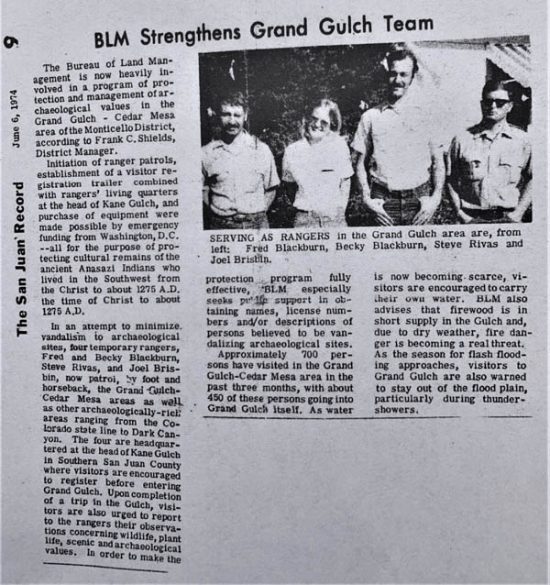
Cedar Mesa and its many canyons, including Grand Gulch, were known for its dense concentration of archaeological sites, petroglyphs, and pictographs. Since the late 19th century, these cultural sites had been desecrated by pothunters who were seeking artifacts. In 1974, there was still a significant amount of perishable material such as bone, cordage, turkey feather blanket scraps, basketry fragments and ceramic and lithic materials lying about on the surface in and near the sites.
The BLM scrambled to start up the Grand Gulch Ranger Program and to set up the Kane Gulch Ranger Station beginning February 1974. Everything started from nothing and was (seemingly) ongoing all year: personnel, vehicles, communication equipment, housing, support facilities (generator, tack/equipment shed), potable water system, septic system, horses and mules, corral, feed and tack.
Our BLM ranger uniforms consisted of blue jeans and any type of shirt we wanted to wear. We sewed a BLM patch on the left upper sleeve and that magically transformed the shirt into an official BLM uniform. We four rangers all wore different colored shirts, mine was white. I have no idea why I chose a white shirt or how I kept it so clean. I must have had more than one white shirt in my closet. We each wore different hats, mine was a pith helmet which I dearly loved for its shade. The men wore ball caps and/or cowboy hats. We all wore cowboy boots or hiking boots.
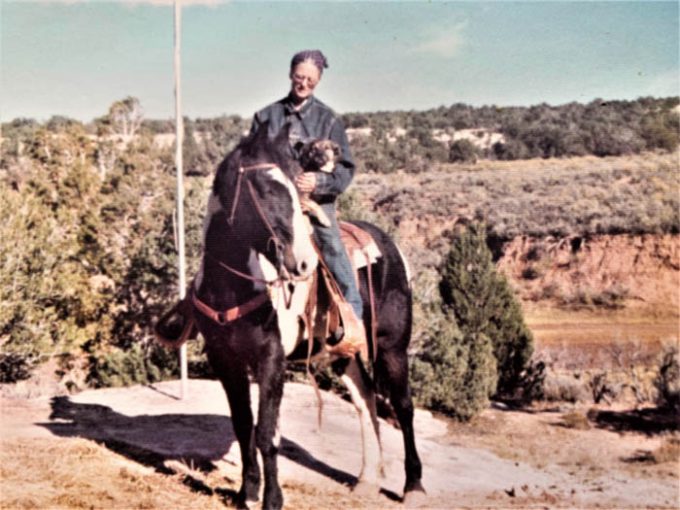
The Kane Gulch Ranger Station trailer was hauled in on April 9, 1974, and placed on the bench across Kane Wash just west of the existing BLM visitor center. The trailer was in pretty rough shape from the get-go as it was a FEMA trailer destined for some disaster elsewhere. It was 12’ x 60’ with an open kitchen/living room, a small bedroom, a full bathroom and large bedroom. The small bedroom was renovated into the Ranger Station office by punching a door through the outside wall for egress. When it rained, water would leak from the back door, down the hall wall and then cut across the living room and out the front door. The trailer came with mice and one rat. The rat, which we named Willard, was quite a nuisance until it was finally found face down in the horse water trough.
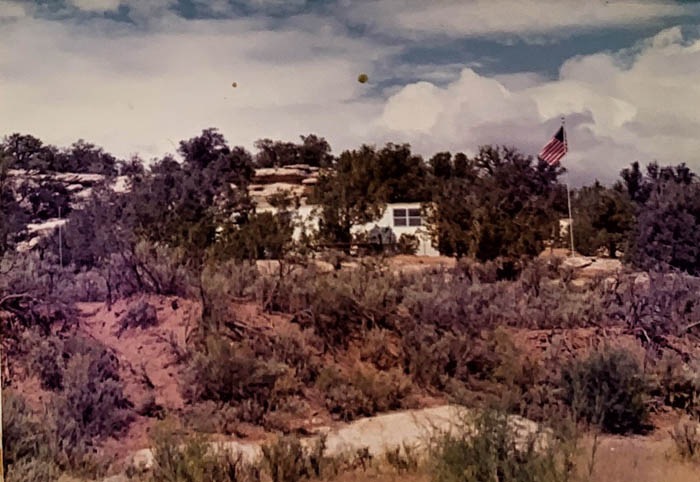
When we four rangers were not pulling each other out of muddy roads, changing flat tires, or any number of maintenance or operational issues, we were out on Cedar Mesa dirt roads or in Grand Gulch doing our best to deter pothunting.
Most visitors entered Grand Gulch at Kane Gulch with a popular exit either at Bullet Canyon (about 23 miles) or Collins Canyon (about 40 miles). Fewer visitors continued past Collins Canyon to the San Juan River (about 20 miles).
As an example of just how popular Grand Gulch was in 1974, here’s an excerpt from my journal for Memorial Weekend:
5/25/74 SATURDAY
Group of 30 (brand inspectors) and 50 horses & mules left about 9:30 down Kane. Will come out at Collins on Monday. They left in 2 groups of 12-15 riders in each group. The two groups were about ¼ of a mile apart with most of the pack animals in the rear. After they rode off this morning, I walked over & checked their camp for cleanliness. Gum wrappers, match boxes, a few beer cans, card box full of newspapers, one log was still smoking from one of the campfires early this morning.
Party of 26 are walking down Kane to Turkey Pen & will return tomorrow. They have 2 packhorses. Left about 11:45 am.
Five people down to ruin junction and back. Will check in with me when they come out.
Group of 16 people into Kane & will hike as far as they can. Will come out Monday. Ages from about 5 – grandma. I explained to them how to dig for water & about the group of horses ahead of them.
Estimate = 77 people & 52 horses in G.G.
Everyone made use of the outhouse.
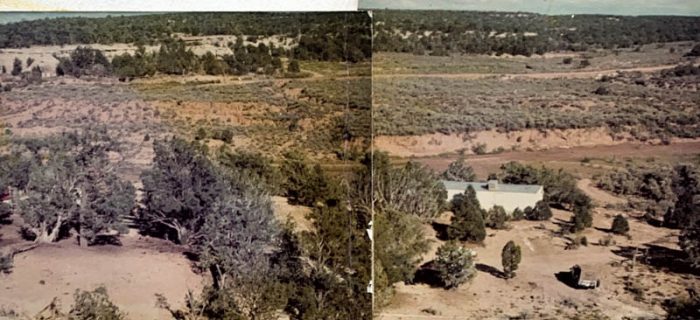
Today, it seems unbelievable that the BLM would allow 52 horses and mules plus a total of 77 people into Grand Gulch at once. But there were no limits for livestock or visitors at that time and with only four rangers there was no way to manage such large, concentrated visitation numbers. Cedar Mesa saw equally high numbers of visitors as the many dirt roads accessed Grand Gulch as well as the other major canyon systems within the Cedar Mesa plateau.
Beginning in June 1974, The Museum of Northern Arizona’s Department of Anthropology, led by Dr. William D. Lipe, was contracted by the BLM to remove archaeological surface materials from nine specific alcoves in Grand Gulch. The materials were catalogued and placed in storage at the Museum of Northern Arizona. It was thought that leaving the cultural items exposed on the surface would invite further digging, looting and desecration to the remaining archaeological resources. Certainly, visitors to the canyon were pocketing small surface artifacts. Others were still digging and desecrating sites looking for artifacts.

There was no law enforcement authority on BLM lands at that time, so our focus was on deterring vandalism by our presence and educating the public. We were somewhat effective on a preventative measure because potential looters knew we were out there and they really didn’t want to run into us.
I doubt that a sudden BLM presence at Grand Gulch and Cedar Mesa was welcomed by everyone in nearby communities, consequently Pete Steele became an important resource for the BLM ranger program.
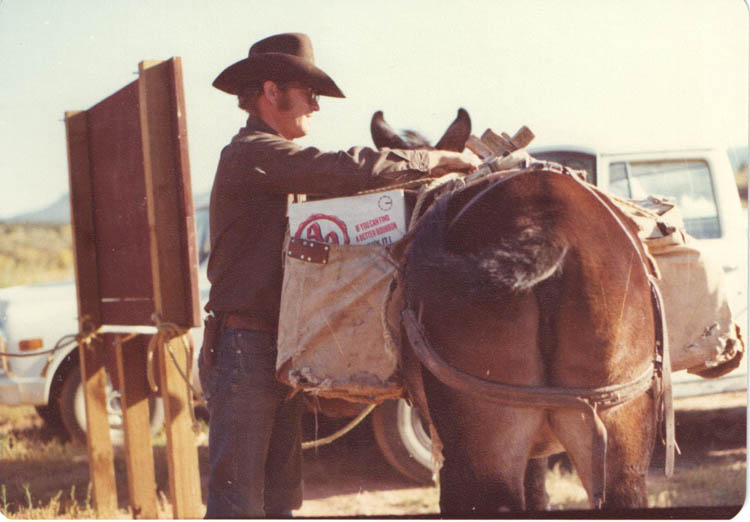
Pete lived in Monticello, Utah, and had worn many hats: cowboy for the Scorup-Sommerville Cattle Company, uranium miner, government trapper, and horseback guide to name a few. He began his horse pack guiding company, Horsehead Pack Trips, in 1967 and he was one of the first guided horse tour permittees at Canyonlands National Park.
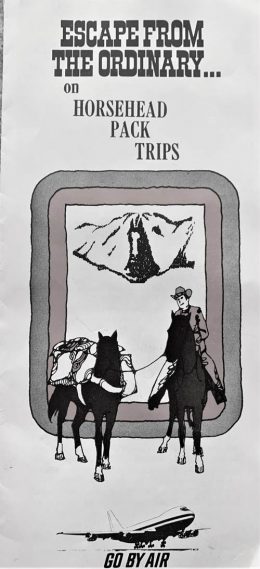
When I knew Pete in 1974, he was tall and lanky with a cowboy hat always pulled down low on his head. He was easy to be around, truly an old-time cowboy but young at heart, and was a master at recounting historical events and tales from his experiences in Southeast Utah.
Pete had been guiding horseback tours through Grand Gulch for a long time and knew the canyon better than anyone. He was protective about the archaeological resources within the Gulch and would let us know when he found fresh digging, looting or other disturbances to the sites. On more than one occasion, he would ride into the canyon for several miles just to remove a rope that he had spotted from a previous trip. People intent on entering the canyon to dig in archaeological sites would drive as close to the rim as possible and then set a rope to use as access into and out of the canyon. He removed their access.
The BLM rented horses and mules from Pete for our use in Grand Gulch each year. This first year, he delivered the animals to Kane Gulch Ranger Station on May 18, 1974, along with saddles, bridles and halters. The rangers constructed a corral up behind the trailer using the sandstone slickrock as one side of the corral; and we hauled water from Kane Spring in 55-gallon barrels, set in the back of a pickup, to the horse trough.
Our main horse herd in 1974 included Tsetso, Pearl, Star, Popcorn, and Enid (the mule). Tsetso was my favorite horse to ride; he was a flamboyant pinto gelding with a flair for avoiding quicksand; therefore, whoever rode Tsetso had to ride in the lead. Pearl was an older mare that none of us particularly liked to ride because she was slow and was inclined to stumble. Star was Pete Steele’s daughters’ personal horse, so I’m sure his kids were heartbroken when they lost Star to the Ranger program on a temporary basis each year. Later, Popcorn came along who was a white horse that was not memorable to ride except that he preferred to keep his nose on the tail of the horse ahead of him and stay in line. Enid was what gave mules a bad name, but she and I got along just fine. I really liked handling Enid because she was clever and didn’t suffer fools. My love affair with mules began with Enid. Later in life, I acquired an excellent riding mule.
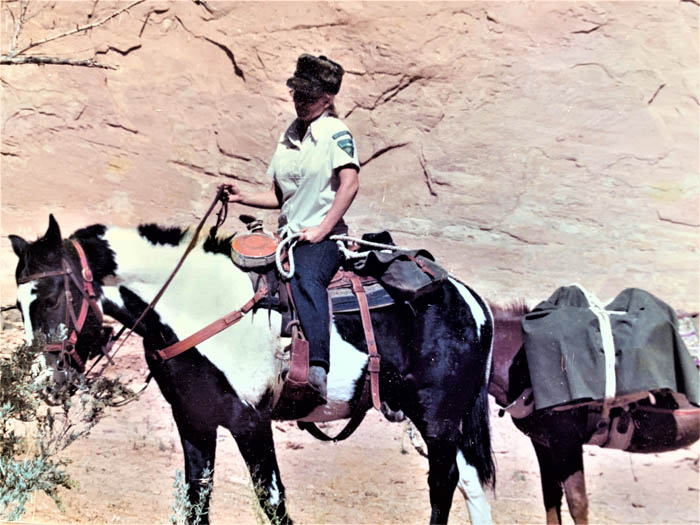
Pete was willing to share his knowledge about Grand Gulch with us rangers. It would have taken us years to learn the nuances of the canyon system and the location of the innumerable archaeological sites, rock art, or know which sites had been recently vandalized or what condition they were in prior to being looted. He took almost all of the rangers through the Gulch, individually, with one of his commercial horseback trips in 1974. In subsequent years we paired up between ourselves to familiarize the new rangers to the canyon system. Pete continued to share his canyon knowledge with us through the years.
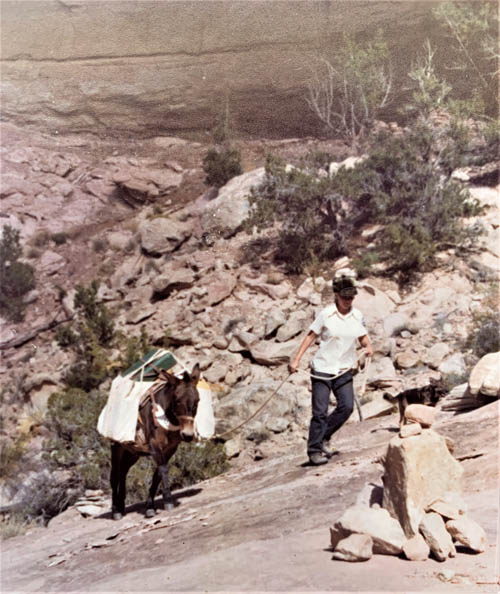
From June 30 to July 5, it was my turn to go with Pete and his four guests on a pack trip through the Gulch from Kane to Collins. Prior to this, I had been day-hiking and day-riding into the Gulch, but I had not been all the way through the canyon yet so I was thrilled for this trip. With only four rangers, it was difficult to commit two rangers (safety in pairs) for a multi-day trip when coverage was needed at the ranger station.
This is the trip where Pete taught me how to pack a mule, and I used this skill in subsequent years packing in the Colorado high country. This is also the trip where Enid (the mule) laid down fully packed which broke the ceramic crock holding the sourdough starter that Pete had carefully tucked into the pack lashed to her back. The crock was shattered and Pete was utterly irritated at Enid for ruining the sourdough starter. He had been cooking Dutch oven sourdough pancakes and biscuits each day on this trip and I don’t remember if he was able to improvise after the crock pot crunch. He claimed that he named Enid after a former client he hadn’t particularly liked and that she (Enid the mule) seemed to always live up to her namesake.
On this trip, Pete’s four guests were from Switzerland: Ueli and Sylvia, Hans and Helen. They said they had a good friend in Denver who forwarded his Colorado Magazine subscription to Ueli. A Grand Gulch article in the magazine caught Ueli’s attention, he contacted Pete, and the four friends booked this trip.
I will always remember the huge round of Raclette cheese that the Swiss guests brought with them on this pack trip. They explained that back home, the cheese is melted on a hot stone over an open fire and then the melted cheese is scraped onto cooked potatoes. So, one night while the potatoes were cooking in the firepit coals, Pete found a sandstone slab and heated it by the fire. The cheese melted just fine on that sandstone and we scraped it off, along with bits of sand, onto our potatoes. The cheese was heavenly, if not a little gritty. Regardless, it was delicious.
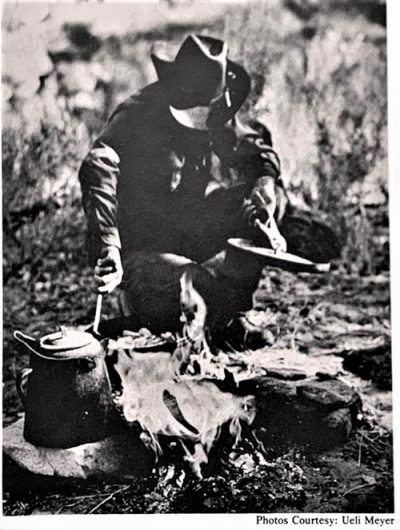
The temperature was very hot this entire trip, probably 100 or higher, and there was very little water in the main drainage of the Gulch. At one camp, the spring was completely dry so Pete dug a small hole in the dry riverbed at a strategic location and in the morning, it had filled with water. We were able to fill three canteens with enough left for the livestock. Some of our camps were located at the mouth of side canyons, where trickling springs provided water.
At our first camp near a large alcove which held a two-story structure, there were quite a lot of corn cobs, twine, yucca cords and pottery shards lying about. All these items had been exposed since Dr. Lipe’s archaeological crew had gathered similar artifacts from this exact location earlier this month. Clearly, visitors to the canyon were rooting around for artifacts.
The next day took us deeper into the Gulch where Pete showed us several rock art panels: Tiny Panel, Bird Panel, Breech Birth, Red Elk, and Frog Panel. There was a trickle of water at the next spring near a kiva. Pete noted that the stones from the kiva’s ventilator shaft had been removed and were laying on the ground since he was last through the Gulch just a couple weeks ago.
We camped up a side canyon near a good spring this night and the next night. Everybody was overly hot and tired and this canyon spring was a good place to cool off and recoup energy.
The next day the livestock was hobbled and we left camp very early to hike up the canyon wall to view several ruin sites, climbing all the way to the rim. We worked around the rim, viewed two very large surface sites and then dropped back into the canyon. Lucky for us, in the canyon bottom, nestled amongst huge boulders, we came across a pool of water large enough for all of us to take a dip. It was fed by a cold spring trickling from under the boulders. Oh man, that felt good! Everybody was refreshed and we hiked back to camp to fix breakfast at 2:30 p.m.
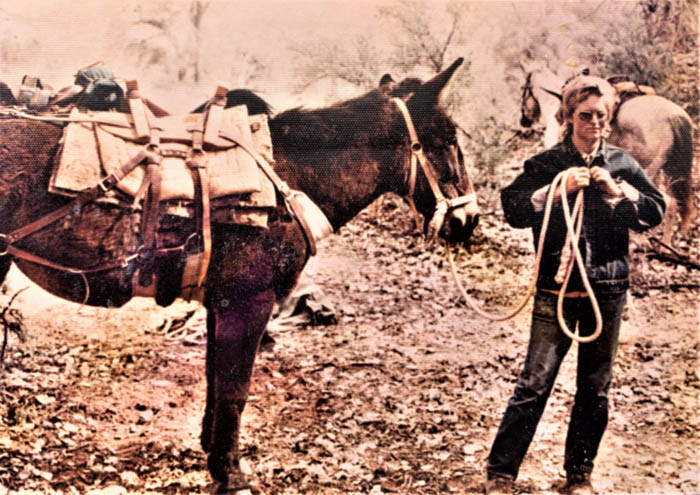
Our next campsite was near a pool of springs at the mouth of a canyon. Along the way, Pete showed us more rock art panels and archaeological sites where he compared them to his prior trip, looking for any disturbances. I was writing notes like crazy in my little pocket notebook with dull pencil. Camp setup tonight was much the same as the previous nights: I would help Pete unpack the gear and help with getting the livestock unsaddled and settled. The four guests would explore nearby or sit in the shade cooling off. Pete would set up his cooking gear and get a fire going. His Dutch oven would make an appearance and he would cook biscuits and whatever else was on the menu. It was all superb cowboy camp food. Then he’d talk about the history of the area, the archaeology, and answer any questions from the group. He was a natural born story teller.
One of the women was stepped on by her horse, but no terrible damage done. It didn’t appear that any of the guests had ridden much, but they were doing surprisingly well given some of the trail challenges on this trip. I had owned and ridden horses since I was a little kid, so I was right at home on the back of a horse. I got to ride Tsetso, the quicksand-sniffing pinto, on this trip so I was content.
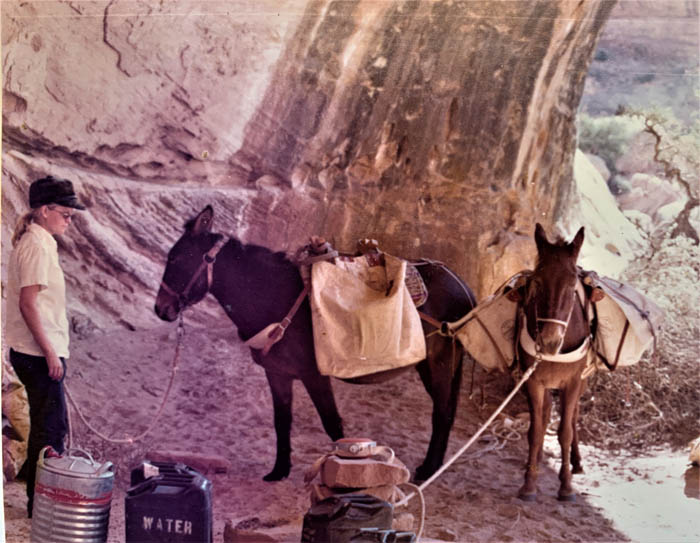
The next day we explored up a canyon and found a large alcove with evidence of recent pothunting. There were disturbed storage cysts with pieces of yucca sandals, a turkey bone awl, and large remnants of turkey feather blankets. I took photos and Pete helped me cover the items in place as best we could. Pete had checked this site just two weeks ago and founding nothing amiss. I felt frustrated finding such recent digging disturbance. It’s as if we were always one step behind.
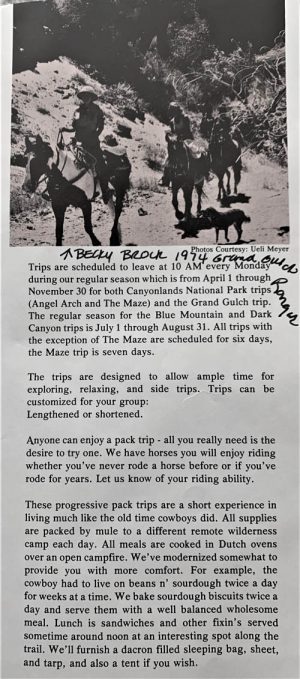
In the next alcove, we found a large trash pile of beer cans, vodka bottles, juice cans, cigarette butts, and butane bottles that appears to have been dug up by an animal. Pete and I bagged everything and added it to one of the pack animals.
We also found recent charcoal graffiti drawn onto the side of a significant ruin; the person signed their name, so I took a photograph of the vandalism in order to follow-up once I got back to the Ranger Station. Once again, Pete stated he had not seen this vandalism on his trip two weeks ago when he brought his clients to this specific site.
This day was full of fantastic, colorful rock art panels and petroglyphs: Corn Man, Ghost Panel, Pornography Panel, Blue Bird, Kokopelli playing flute to sheep, Five-men petroglyph, Piano Panel, and more.
We camped the last night next to a very small pool of water, just enough to fill our canteens and water the livestock. Today was a hot day and everyone was tired. Despite the heat, I was not looking forward to exiting the canyon and returning to civilization. The canyon had grown on me and Pete was the best host, historian, story teller, mule skinner, and guide one could ever ask for.
The next morning, we packed up and visited several unique ruin sites along the route to Collins Canyon. On the trail out of Collins, one of the pack mules (not Enid) spooked and got loose bumping two of the guests as the mule ran back down the trail. I always held my breath, just a little, at the near misses especially when guests were involved because we were a long way from medical help. But we all made it out without a major incident and it sure felt good to water the horses and splash water on my face and neck at the Collins trailhead water trough. The spring that feeds that trough is clear and cold and on future trips I would jump in that trough, fully clothed, to cool off.
Ueli took many photographs during this trip, including some of Pete and the rest of us riding in Grand Gulch. He subsequently provided the photos to Pete who created a three-fold brochure advertising his “Horsehead Pack Trips” business. The brochure describes trip choices, trip lengths and rates for July 1, 1975 to September 1, 1976. An eight-day, seven-night pack trip with Pete cost $399.00 per person for 1975-1976; or in 2021 dollars it would cost $2,249 today.
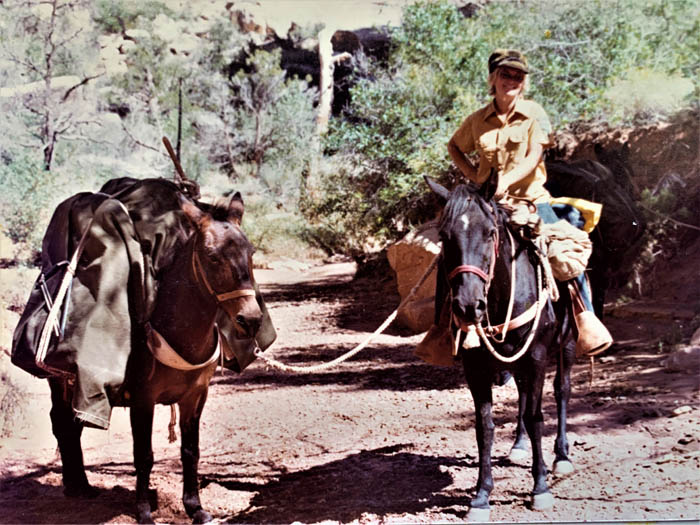
Pete continued to guide trips through the Gulch, and we conversed before and/or after his trips, but I never had another chance to go with him and his clients. I was too busy running my own trips through the Gulch with fellow rangers and involved with other work activities and life in general. I resigned from the BLM in the spring of 1978 and never saw Pete nor heard much about him again.
Writing this article inspired me to search for answers about the rest of Pete’s life. Consequently, I located his widow, Jackie, and we recently sat down in a small café to reminisce about those days gone by. Jackie and I had not seen each other in 47 years! She remembered the Swiss guests and that they had corresponded with her for years and even mailed her chunks of cheese once in a while after that 1974 trip. Pete and Jackie eventually sold their guide outfit after 12 years of business.
To my surprise and pleasure, I learned that Pete was hired as a BLM Grand Gulch Ranger in 1979 and earned his BLM law enforcement commission in 1985. He went on to work for the BLM in New Mexico and Nevada before retiring in 1996 and returning to Monticello for the rest of his life. He was diagnosed with Multiple Myeloma and passed away in 2014 at the age of 77.
The best part of Pete’s BLM employment story is that he lived in “my” trailer at Kane Gulch Ranger Station! That old trailer was my home for four unforgettable, adventurous, glorious, youthful years. Pete was my favorite cowboy and horse pack guide in Grand Gulch and it seems fitting that we both had the same unique experience living and working in that beat-up, mice infested ranger station trailer. If those walls could talk…. oh the stories!
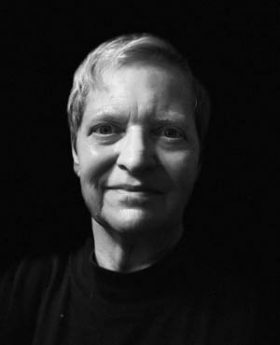
Becky Brock was born and raised in southern California, migrated to Colorado in 1969, and later graduated from Fort Lewis College in Durango, Colorado. Good fortune landed her at Natural Bridges National Monument in 1973 as a volunteer and then a seasonal ranger. From 1974-1978, she found herself living an extraordinary life as one of the first BLM Grand Gulch Rangers. Later career opportunities with the National Park Service took her to Mesa Verde National Park; the Statue of Liberty National Monument; and 13 years in Alaska as the Commercial Services manager for Katmai National Park and Preserve, Lake Clark National Park and Preserve and Aniakchak National Monument and Preserve.
She retired after 31 years with the federal government and lives in SW Colorado near her children and grandchildren.
To comment, scroll to the bottom of the page.
Zephyr Policy: REAL NAMES ONLY on Comments!
Don’t forget the Zephyr ads! All links are hot!
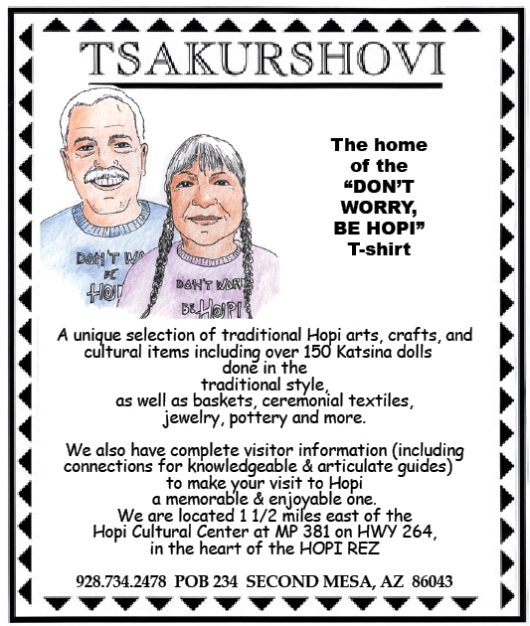



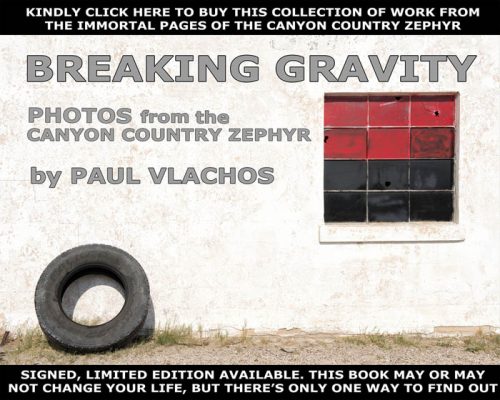
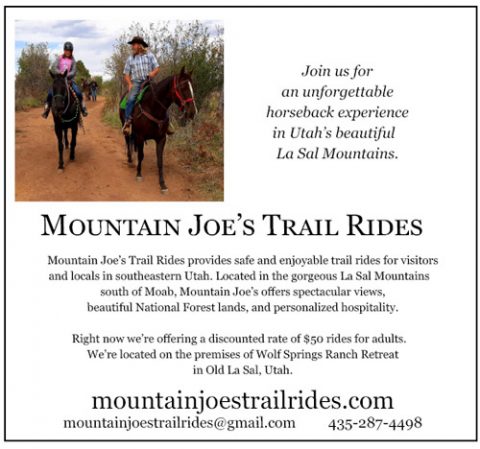
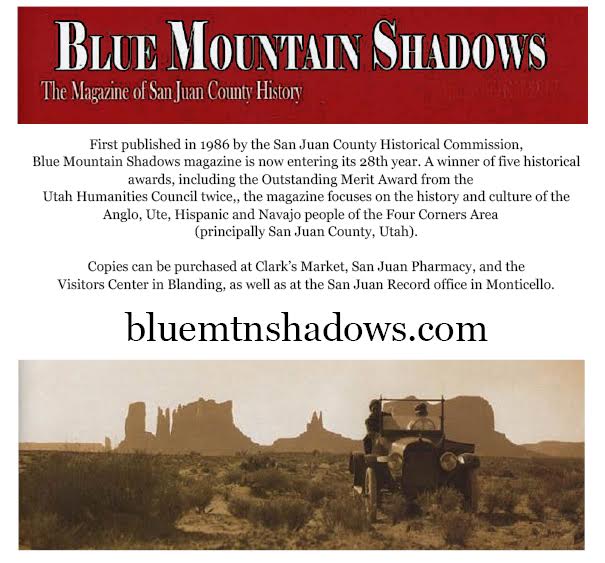

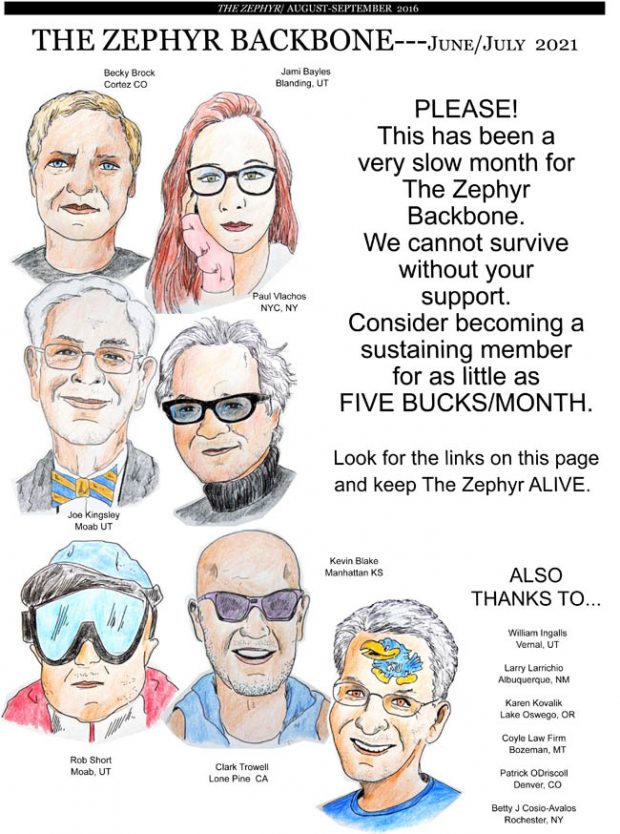
This is an excellent article regarding a former 1955 Grand County High school classmate of mine .
He was called AB in school with the nickname of MAGOO.
Thanks for highlighting one of the things he was passionate about
Thanks again for your excellent research
A Fellow Ranger
Ron Pierce
Loved the article and the pictures of my dad! He was an extraordinary man that lived an extraordinary life on an exquisite picturesque land.
Congratulations on a great article, Becky. Very well written and I enjoyed the read. Best to you.
Thank you for this article about my Uncle Pete Steele, he was my favorite to visit and listen to his story.
Agneta! I have great memories of you in my Katmai world!
I know Becky!!!! Please get in touch with me!
Thanks, Becky, for referring me to this article. It was good meeting you earlier this year at Natural Bridges, where I worked in 1970 and 1971, and where I work now in my 4th consecutive season. I met Pete Steele in 1982, and sensed then that he was extraordinary. It breaks my heart that there has always been so much vandalism to those precious archeological site, to which you attest so well in your article.
I really enjoyed this article and especially the photos – brought back lots of memories. I worked at Grand Gulch as an SCA in the Fall of 1983 and worked out of that old trailer ranger station across Kane Wash. I left for the winter but came back and worked the Spring ’84 season out of the new trailer they put in across the road from the old one. I was hired as the seasonal ranger there in 1985 and spent most of that year there. During those years I worked with Pete Steele, John Scorup and Dave Krouskop and got to know Cedar Mesa real well. All of the issues there with pothunting got me interested in resource law enforcement so I went to the training and spent the next 25 years as a law enforcement ranger at Mesa Verde, Hovenweep and Bandelier. I have a large olla that Jackie Steele made for me that is a replica of one that was found in Grand Gulch and is at Edge Of The Cedars museum now. I retired in 2015 and in 2019 my wife and I moved up to Cedaredge, CO. I’ve been back to Cedar Mesa numerous times over the years since I worked there
and look forward to another trip real soon.